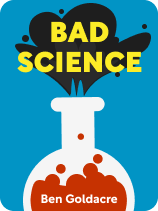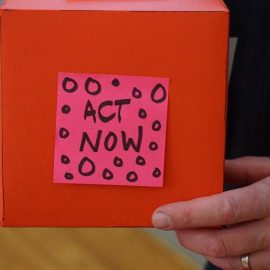

This article is an excerpt from the Shortform book guide to "Bad Science" by Ben Goldacre. Shortform has the world's best summaries and analyses of books you should be reading.
Like this article? Sign up for a free trial here.
What is blinding in research? How can you tell when a researcher is practicing good blinding?
Blinding is a controlled research technique that involves the placebo effect, where neither the patients nor doctors don’t know which drug is being given. However, some researchers use bad blinding techniques to influence the participants in some way.
Continue reading to learn how blinding in research works, according to Ben Goldacre’s book Bad Science.
Blinding and the Placebo Effect
Goldacre argues that some researchers manipulate their studies by allowing participant and researcher expectations to skew results due to the placebo effect and blinding in research.
The placebo effect is a phenomenon in which the strength of a medical treatment is affected by both the patient’s beliefs about the treatment and the doctor’s beliefs about the treatment. Because of the placebo effect, when you believe you’re receiving a more effective treatment, your health improves more than when you believe you’re getting an ineffective treatment, even if the treatments are identical. Similarly, when doctors believe they’re giving an effective treatment, their patients tend to improve more than when they believe they’re giving an ineffective treatment.
(Shortform note: While physicians have long understood that the placebo effect can improve patient outcomes, nobody knows why placebos work. New research shows that placebos cause increased activity in specific regions of the brain, such as the frontal lobe. Studies have also shown that placebos cause the brain to release chemicals that are linked to mood and mental health. While these results don’t fully explain how the placebo effect works, they make it clear that a complex, neurological reaction is involved.)
According to Goldacre, good studies make use of a technique called blinding to prevent the placebo effect from influencing their results. Blinding is the practice of keeping participants and administrators unaware of which treatment each participant receives. By keeping participants and those administering treatments in the dark, blinding ensures that no group of participants will be more influenced by the placebo effect than any other group.
Double Blinding and Single Blinding
It’s important to note that there are two main types of experimental blinding, each with its own benefits. The type of study Goldacre describes, in which both participants and administrators are blinded, is commonly known as a double-blind study. However, in some studies (called “single-blind” studies), only participants are blinded, and administrators know which treatment each patient receives. While double-blind studies are better at minimizing the placebo effect’s impact on results, single-blind studies are often cheaper and easier to conduct.
Additionally, in some situations, it may not be possible to completely blind either group. For instance, in a study about the effects of exercise on a certain condition, participants will always know whether they exercised. Even well-intentioned researchers may have to compromise on blinding practices due to logistical and financial reasons.
Spotting Bad Blinding
Examining a study’s blinding practices can help you determine whether that study is trustworthy. Specifically, in trustworthy studies, all treatments should be administered in the same way to help ensure that participants all have the same expectations for their treatments. For example, if one group receives an experimental drug in the form of an injection to the arm, the group receiving the control drug should be given that drug by an arm injection, too. Furthermore, treatments should not be given by the researchers who designed the study. As you read a study, check to see if the study’s authors brought in outsiders to administer treatments. If they didn’t, their blinding practices may not have been thorough enough.
(Shortform note: In addition to blinding participants and researchers, researchers also recommend blinding the analysts in charge of interpreting the study’s data. Analysts who aren’t blinded may be tempted to present or interpret the data more favorably to make their studies seem more successful. When you read a study, be sure to take note of who compiled the data—it’s a red flag when researchers handle all their data by themselves.)
On the other hand, if a study’s description of its blinding methods is short, vague, or absent, take it as a red flag. By withholding this information, the study’s authors deny you the tools you need to evaluate their claims.
(Shortform note: As a tool for evaluating their own blinding methods, experts recommend that researchers ask participants whether they think they received the placebo or the real treatment. If most participants are able to guess which treatment they received, this may indicate weak blinding practices. When reading studies, you should check to see if researchers have made an attempt to analyze whether their blinding methods were successful. It’s a good sign when they use these kinds of tools and report the results.)

———End of Preview———
Like what you just read? Read the rest of the world's best book summary and analysis of Ben Goldacre's "Bad Science" at Shortform.
Here's what you'll find in our full Bad Science summary:
- The strategies researchers, corporations, and journalists use to mislead the public
- The tools you need to identify and call out shady science when you see it
- Why media outlets have an ethical obligation to publish retractions






